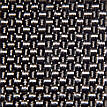
In general, yarns may be defined as a linear assemblage of oriented twisted fibres held together by friction. The yarn can enhance good fibre performance or compensate for poor fibre performance. Usually they are used as raw material for woven-textiles, have good tensile strength, high flexibility, and are electrical and thermal insulators.
A textile (fabric or cloth) is a two-dimensional structure consisting of fibres held together exclusively by friction. This usually gives a porous and flexible material, with a huge inner surface. Porosity is essential for insulation properties and permeability to water vapour.
The properties of textiles depend on the chemical and physical properties of the fibres, the method used to process them (for example braiding, felting, lacing, tufting or weaving) and the mechanical or chemical post-treatments.
Interlaced textilesBraided textiles
Crochet textile
Knitwear
Lace
Tufted textiles
Woven fabric
Non interlaced textilesFelt
Fibre web
Film
Foam
Leather
Paper
Bast
BARTEX(R)
YarnsContinous filament
String
Rope
ReferencesGlossary of frequently used carpet terms
Introduction to yarn manufacturing
Seminar of materials: textiles
Technical Textiles Web
For materials in general see also:
Machine Design On-line
Materials by Design
ViMS (Visualizations in Material Science)
Photo
Copyright© 1996-2019 Torben Lenau
This page is part of Design
inSite
Disclaimer